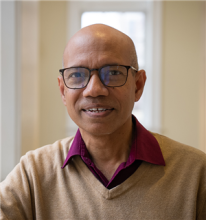MAE 298 SEMINAR: Biomechanics of Mental Health

Edward William and Jane Marr Gutgsell Professor
Department of Mechanical Science and Engineering
University of Illinois at Urbana-Champaign
Abstract: For centuries, the relation between mind and body has intrigued philosophers and scientists. How body affects the mind, and mind affects the body? Since mid-19th century, scientists searched for the “mind” in the anatomy of the brain, just as they explored the “body” with Da Vinci’s artistic renditions in the anatomy of the muscles. Muscles are considered as contractile force actuators, and neurons as information processors. There is, however, an increasing body of evidence suggesting that neurons are also contractile, and without their force, they cannot function. Contractility of neurons and muscles might reveal the first link between mind and body. Here, we will discuss some of the initial results on the role of muscle and neuron contractile forces on neuronal functions, and the effect of physical exercise on mental health. Understanding the critical role of neuron mechanics on neuron function may lead to new therapeutics against mental diseases including anxiety, depression, dementia and Alzheimer’s disease.
Bio: Taher Saif is the Edward William and Jane Marr Gutgsell Professor in the Department of Mechanical Science and Engineering at the University of Illinois at Urbana-Champaign. His current research includes tumor micro environment, mechanics of neurons and cardiac cells and development of biological machines. His research involves exploration of the underlying mechanism of cell-cell and cell-scaffold interactions, as well as the biophysical processes by which cells remodel their microenvironment. He served as the research lead for biohybrid machines group in the NSF Science and Technology Center, EBICS. He is the recipient of 2020 Engineering Science Medal from the Society of Engineering Science, and the 2018 Warner T. Koiter Medal from American Society of Mechanical Engineers. He became a member of the National Academy of Engineering, USA (2024).
Share
Upcoming Events
-
CEE Ph.D. Defense Announcement: Machine Learning and Remote Sensing for Environmental Modeling - From Large-Scale Streamflow Forecasting to Malaria Risk Mapping
-
CBE Special Seminar: Operando Electrochemical Methods at Dynamic Energy Materials Interfaces
-
CEE Ph.D. Defense Announcement: Release, Transport and Fate of Per- and Polyfluoroalkyl Substances (PFAS) in Urban Watersheds
-
MSE 298 Seminar: Mechano-Electrochemical Phenomena at Ceramic Electrolyte Interfaces
-
MSE 298 Seminar: Innovation In Materials Science - An Industrial R&D Perspective
